#BMW electric vehicles
Explore tagged Tumblr posts
Text
BMW i Vision Dee: Almost Human
BMW i Vision Dee: Almost Human Imagine a world where your automobile recognizes who you are when you approach, and greets you by name. A world where the iconic BMW “Kidney” grille can produce different facial expressions, like a smile. A world where you can choose from 32 different colors for your car, and change them from one to another color at will. A world where the high-tech in your car…

View On WordPress
#Bavarian Motor Works#BMW#BMW Automotive#BMW Digitalization#BMW e Ink#BMW electric cars#BMW electric vehicles#BMW Electrification#BMW Group#BMW History#BMW I Vision#BMW i Vision Dee#BMW I Vision Vehicle#BMW Innovation#BMW Motorrad#BMW Museum#BMW Museum Munich#BMW Pioneering#BMW Technology#BMW USA#BMW Welt#BMW Welt Munich#Cars of the future#CES 2023#Digital Emotional Experience#Future#future cars#Future Vehicles#Hydrogen Fuel Cell Cars#Las Vegas conferences
1 note
·
View note
Text


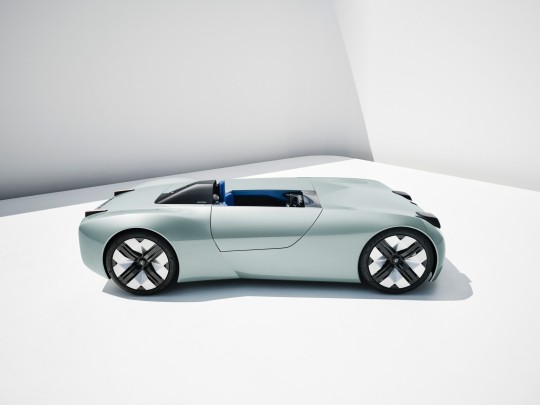

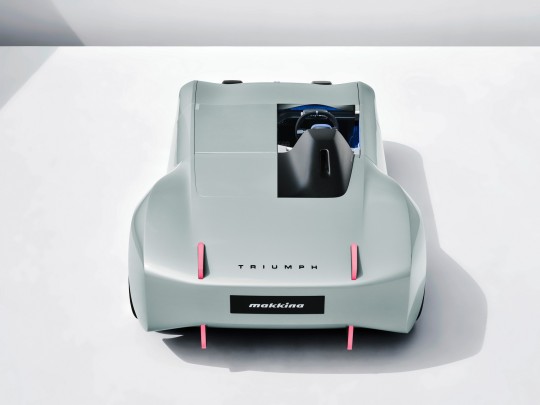




Triumph TR25
#art#design#supercars#luxurycars#supercar#luxurylifestyle#luxurycar#hypercars#hypercar#triumph#triumph TR25#BMW#e-car#electric cars#electric vehicles#BMW I3S#concept#car concept
108 notes
·
View notes
Text
Lexus GX 550 Overtrail

#lexus#autos#cars#classic car#audi#luxury car#bmw#fast cars#ford#lexus car#lexus ramos#ferrari#lexus is#replace lexus key#lexus europe#chevrolet#electric cars#electric vehicles#electric#evs
5 notes
·
View notes
Text
BMW 530i_2025 New stock 2025
2 notes
·
View notes
Text
youtube
BMW Faces Another Blow in China! World’s First 5S Dealership Collapses, With Owner on the Run
Who could have imagined a BMW dealership shutting its doors and vanishing overnight? In late September, a passerby noticed that Beijing xingdebao, once Asia’s largest BMW 5S dealership, was eerily deserted. The once-bustling location didn’t even have a security guard in sight.
#China#BMW#communist regme#demise of legacy automakers#competition#electric car#electric vehicle#Youtube
2 notes
·
View notes
Photo
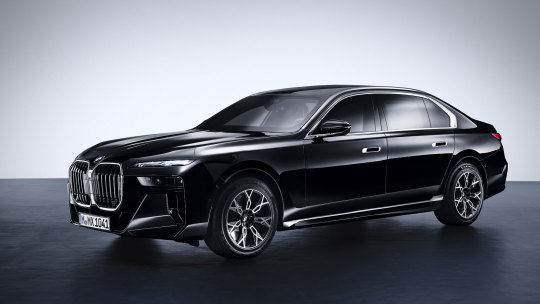
The First-ever BMW i7 Protection And BMW 7 Protection Unveiled At IAA Mobility 2023
Luxury and comfort with very serious protection.
Follow us for more Tech Culture and Lifestyle Stuff.
2 notes
·
View notes
Text
Hydrogen Is the Future—or a Complete Mirage!
The green-hydrogen industry is a case study in the potential—for better and worse—of our new economic era.
— July 14, 2023 | Foreign Policy | By Adam Tooze

An employee of Air Liquide in front of an electrolyzer at the company's future hydrogen production facility of renewable hydrogen in Oberhausen, Germany, on May 2, 2023. Ina Fassbender/ AFP Via Getty Images
With the vast majority of the world’s governments committed to decarbonizing their economies in the next two generations, we are embarked on a voyage into the unknown. What was once an argument over carbon pricing and emissions trading has turned into an industrial policy race. Along the way there will be resistance and denial. There will also be breakthroughs and unexpected wins. The cost of solar and wind power has fallen spectacularly in the last 20 years. Battery-powered electric vehicles (EVs) have moved from fantasy to ubiquitous reality.
But alongside outright opposition and clear wins, we will also have to contend with situations that are murkier, with wishful thinking and motivated reasoning. As we search for technical solutions to the puzzle of decarbonization, we must beware the mirages of the energy transition.
On a desert trek a mirage can be fatal. Walk too far in the wrong direction, and there may be no way back. You succumb to exhaustion before you can find real water. On the other hand, if you don’t head toward what looks like an oasis, you cannot be sure that you will find another one in time.
Right now, we face a similar dilemma, a dilemma of huge proportions not with regard to H2O but one of its components, H2—hydrogen. Is hydrogen a key part of the world’s energy future or a dangerous fata morgana? It is a question on which tens of trillions of dollars in investment may end up hinging. And scale matters.
For decades, economists warned of the dangers of trying through industrial policy to pick winners. The risk is not just that you might fail, but that in doing so you incur costs. You commit real resources that foreclose other options. The lesson was once that we should leave it to the market. But that was a recipe for a less urgent time. The climate crisis gives us no time. We cannot avoid the challenge of choosing our energy future. As Chuck Sabel and David Victor argue in their important new book Fixing the Climate: Strategies for an Uncertain World, it is through local partnership and experimentation that we are most likely to find answers to these technical dilemmas. But, as the case of hydrogen demonstrates, we must beware the efforts of powerful vested interests to use radical technological visions to channel us toward what are in fact conservative and ruinously expensive options.

A green hydrogen plant built by Spanish company Iberdrola in Puertollano, Spain, on April 18, 2023. Valentine Bontemps/AFP Via Getty Images
In the energy future there are certain elements that seem clear. Electricity is going to play a much bigger role than ever before in our energy mix. But some very knotty problems remain. Can electricity suffice? How do you unleash the chemical reactions necessary to produce essential building blocks of modern life like fertilizer and cement without employing hydrocarbons and applying great heat? To smelt the 1.8 billion tons of steel we use every year, you need temperatures of almost 2,000 degrees Celsius. Can we get there without combustion? How do you power aircraft flying thousands of miles, tens of thousands of feet in the air? How do you propel giant container ships around the world? Electric motors and batteries can hardly suffice.
Hydrogen recommends itself as a solution because it burns very hot. And when it does, it releases only water. We know how to make hydrogen by running electric current through water. And we know how to generate electricity cleanly. Green hydrogen thus seems easily within reach. Alternatively, if hydrogen is manufactured using natural gas rather than electrolysis, the industrial facilities can be adapted to allow immediate, at-source CO2 capture. This kind of hydrogen is known as blue hydrogen.
Following this engineering logic, H2 is presented by its advocates as a Swiss army knife of the energy transition, a versatile adjunct to the basic strategy of electrifying everything. The question is whether H2 solutions, though they may be technically viable, make any sense from the point of view of the broader strategy of energy transition, or whether they might in fact be an expensive wrong turn.
Using hydrogen as an energy store is hugely inefficient. With current technology producing hydrogen from water by way of electrolysis consumes vastly more energy than will be stored and ultimately released by burning the hydrogen. Why not use the same electricity to generate the heat or drive a motor directly? The necessary electrolysis equipment is expensive. And though hydrogen may burn cleanly, as a fuel it is inconvenient because of its corrosive properties, its low energy per unit of volume, and its tendency to explode. Storing and moving hydrogen around will require huge investment in shipping facilities, pipelines, filling stations, or facilities to convert hydrogen into the more stable form of ammonia.
The kind of schemes pushed by hydrogen’s lobbyists foresee annual consumption rising by 2050 to more than 600 million tons per annum, compared to 100 million tons today. This would consume a huge share of green electricity production. In a scenario favored by the Hydrogen Council, of the United States’ 2,900 gigawatts of renewable energy production, 650 gigawatts would be consumed by hydrogen electrolysis. That is almost three times the total capacity of renewable power installed today.
The costs will be gigantic. The cost for a hydrogen build-out over coming decades could run into the tens of trillions of dollars. Added to which, to work as a system, the investment in hydrogen production, transport, and consumption will have to be undertaken simultaneously.
Little wonder, perhaps, that though the vision of the “hydrogen economy” as an integrated economic and technical system has been around for half a century, we have precious little actual experience with hydrogen fuel. Indeed, there is an entire cottage industry of hydrogen skeptics. The most vocal of these is Michael Liebreich, whose consultancy has popularized the so-called hydrogen ladder, designed to highlight how unrealistic many of them are. If one follows the Liebreich analysis, the vast majority of proposed hydrogen uses in transport and industrial heating are, in fact, unrealistic due to their sheer inefficiency. In each case there is an obvious alternative, most of them including the direct application of electricity.
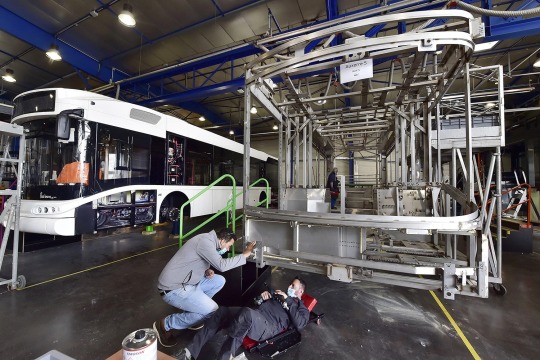
Technicians work on the construction of a hydrogen bus at a plant in Albi, France, on March 4, 2021. Georges Gobet/AFP Via Getty Images
Nevertheless, in the last six years a huge coalition of national governments and industrial interests has assembled around the promise of a hydrogen-based economy.
The Hydrogen Council boasts corporate sponsors ranging from Airbus and Aramco to BMW, Daimler Truck, Honda, Toyota and Hyundai, Siemens, Shell, and Microsoft. The national governments of Japan, South Korea, the EU, the U.K., the U.S., and China all have hydrogen strategies. There are new project announcements regularly. Experimental shipments of ammonia have docked in Japan. The EU is planning an elaborate network of pipelines, known as the hydrogen backbone. All told, the Hydrogen Council counts $320 billion in hydrogen projects announced around the world.
Given the fact that many new uses of hydrogen are untested, and given the skepticism among many influential energy economists and engineers, it is reasonable to ask what motivates this wave of commitments to the hydrogen vision.
In technological terms, hydrogen may represent a shimmering image of possibility on a distant horizon, but in political economy terms, it has a more immediate role. It is a route through which existing fossil fuel interests can imagine a place for themselves in the new energy future. The presence of oil majors and energy companies in the ranks of the Hydrogen Council is not coincidental. Hydrogen enables natural gas suppliers to imagine that they can transition their facilities to green fuels. Makers of combustion engines and gas turbines can conceive of burning hydrogen instead. Storing hydrogen or ammonia like gas or oil promises a solution to the issues of intermittency in renewable power generation and may extend the life of gas turbine power stations. For governments around the world, a more familiar technology than one largely based on solar panels, windmills, and batteries is a way of calming nerves about the transformation they have notionally signed up for.
Looking at several key geographies in which hydrogen projects are currently being discussed offers a compound psychological portrait of the common moment of global uncertainty.
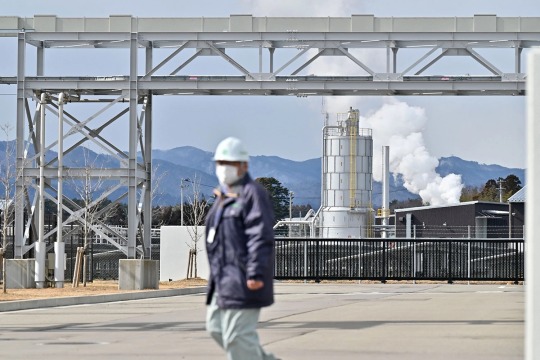
A worker at the Fukushima Hydrogen Energy Research Field, a test facility that produces hydrogen from renewable energy, in Fukushima, Japan, on Feb. 15, 2023. Richard A. Brooks/AFP Via Getty Images
The first country to formulate a national hydrogen strategy was Japan. Japan has long pioneered exotic energy solutions. Since undersea pipelines to Japan are impractical, it was Japanese demand that gave life to the seaborne market for liquefied natural gas (LNG). What motivated the hydrogen turn in 2017 was a combination of post-Fukushima shock, perennial anxiety about energy security, and a long-standing commitment to hydrogen by key Japanese car manufacturers. Though Toyota, the world’s no. 1 car producer, pioneered the hybrid in the form of the ubiquitous Prius, it has been slow to commit to full electric. The same is true for the other East Asian car producers—Honda, Nissan, and South Korea’s Hyundai. In the face of fierce competition from cheap Chinese electric vehicles, they embrace a government commitment to hydrogen, which in the view of many experts concentrates on precisely the wrong areas i.e. transport and electricity generation, rather than industrial applications.
The prospect of a substantial East Asian import demand for hydrogen encourages the economists at the Hydrogen Council to imagine a global trade in hydrogen that essentially mirrors the existing oil and gas markets. These have historically centered on flows of hydrocarbons from key producing regions such as North Africa, the Middle East, and North America to importers in Europe and Asia. Fracked natural gas converted into LNG is following this same route. And it seems possible that hydrogen and ammonia derived from hydrogen may do the same.
CF Industries, the United States’ largest producer of ammonia, has finalized a deal to ship blue ammonia to Japan’s largest power utility for use alongside oil and gas in power generation. The CO2 storage that makes the ammonia blue rather than gray has been contracted between CF Industries and U.S. oil giant Exxon. A highly defensive strategy in Japan thus serves to provide a market for a conservative vision of the energy transition in the United Sates as well. Meanwhile, Saudi Aramco, by far the world’s largest oil company, is touting shipments of blue ammonia, which it hopes to deliver to Japan or East Asia. Though the cost in terms of energy content is the equivalent of around $250 per barrel of oil, Aramco hopes to ship 11 million tons of blue ammonia to world markets by 2030.
To get through the current gas crisis, EU nations have concluded LNG deals with both the Gulf states and the United States. Beyond LNG, it is also fully committed to the hydrogen bandwagon. And again, this follows a defensive logic. The aim is to use green or blue hydrogen or ammonia to find a new niche for European heavy industry, which is otherwise at risk of being entirely knocked out of world markets by high energy prices and Europe’s carbon levy.
The European steel industry today accounts for less than ten percent of global production. It is a leader in green innovation. And the world will need technological first-movers to shake up the fossil-fuel dependent incumbents, notably in China. But whether this justifies Europe’s enormous commitment to hydrogen is another question. It seems motivated more by the desire to hold up the process of deindustrialization and worries about working-class voters drifting into the arms of populists, than by a forward looking strategic calculus.
In the Netherlands, regions that have hitherto served as hubs for global natural gas trading are now competing for designation as Europe’s “hydrogen valley.” In June, German Chancellor Olaf Scholz and Italian Prime Minister Giorgia Meloni inked the contract on the SoutH2 Corridor, a pipeline that will carry H2 up the Italian peninsula to Austria and southern Germany. Meanwhile, France has pushed Spain into agreeing to a subsea hydrogen connection rather than a natural gas pipeline over the Pyrenees. Spain and Portugal have ample LNG terminal capacity. But Spain’s solar and wind potential also make it Europe’s natural site for green hydrogen production and a “green hydrogen” pipe, regardless of its eventual uses, in the words of one commentator looks “less pharaonic and fossil-filled” than the original natural gas proposal.

A hydrogen-powered train is refilled by a mobile hydrogen filling station at the Siemens test site in Wegberg, Germany, on Sept. 9, 2022. Bernd/AFP Via Getty Images
How much hydrogen will actually be produced in Europe remains an open question. Proximity to the point of consumption and the low capital costs of investment in Europe speak in favor of local production. But one of the reasons that hydrogen projects appeal to European strategists is that they offer a new vision of European-African cooperation. Given demographic trends and migration pressure, Europe desperately needs to believe that it has a promising African strategy. Africa’s potential for renewable electricity generation is spectacular. Germany has recently entered into a hydrogen partnership with Namibia. But this raises new questions.
First and foremost, where will a largely desert country source the water for electrolysis? Secondly, will Namibia export only hydrogen, ammonia, or some of the industrial products made with the green inputs? It would be advantageous for Namibia to develop a heavy-chemicals and iron-smelting industry. But from Germany’s point of view, that might well defeat the object, which is precisely to provide affordable green energy with which to keep industrial jobs in Europe.
A variety of conservative motives thus converge in the hydrogen coalition. Most explicit of all is the case of post-Brexit Britain. Once a leader in the exit from coal, enabled by a “dash for gas” and offshore wind, the U.K. has recently hit an impasse. Hard-to-abate sectors like household heating, which in the U.K. is heavily dependent on natural gas, require massive investments in electrification, notably in heat pumps. These are expensive. In the United Kingdom, the beleaguered Tory government, which has presided over a decade of stagnating real incomes, is considering as an alternative the widespread introduction of hydrogen for domestic heating. Among energy experts this idea is widely regarded as an impractical boondoggle for the gas industry that defers the eventual and inevitable electrification at the expense of prolonged household emissions. But from the point of view of politics, it has the attraction that it costs relatively less per household to replace natural gas with hydrogen.
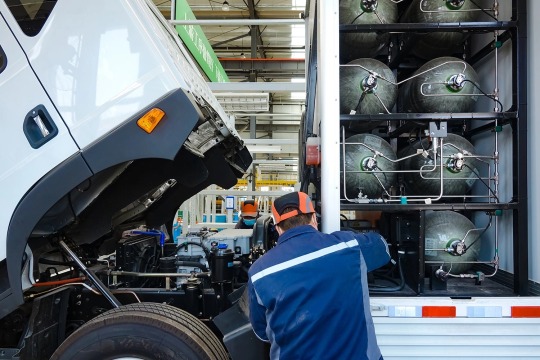
Employees work on the assembly line of fuel cell electric vehicles powered by hydrogen at a factory in Qingdao, Shandong province, China, on March 29, 2022. VCG Via Getty Images
As this brief tour suggests, there is every reason to fear that tens of billions of dollars in subsidies, vast amounts of political capital, and precious time are being invested in “green” energy investments, the main attraction of which is that they minimize change and perpetuate as far as possible the existing patterns of the hydrocarbon energy system. This is not greenwashing in the simple sense of rebadging or mislabeling. If carried through, it is far more substantial than that. It will build ships and put pipes in the ground. It will consume huge amounts of desperately scarce green electricity. And this faces us with a dilemma.
In confronting the challenge of the energy transition, we need a bias for action. We need to experiment. There is every reason to trust in learning-curve effects. Electrolyzers, for instance, will get more affordable, reducing the costs of hydrogen production. At certain times and in certain places, green power may well become so abundant that pouring it into electrolysis makes sense. And even if many hydrogen projects do not succeed, that may be a risk worth taking. We will likely learn new techniques in the process. In facing the uncertainties of the energy transition, we need to cultivate a tolerance for failure. Furthermore, even if hydrogen is a prime example of corporate log-rolling, we should presumably welcome the broadening of the green coalition to include powerful fossil fuel interests.
The real and inescapable tradeoff arises when we commit scarce resources—both real and political—to the hydrogen dream. The limits of public tolerance for the costs of the energy transition are already abundantly apparent, in Asia and Europe as well as in the United States. Pumping money into subsidies that generate huge economies of scale and cost reductions is one thing. Wasting money on lame-duck projects with little prospect of success is quite another. What is at stake is ultimately the legitimacy of the energy transition as such.
In the end, there is no patented method distinguishing self-serving hype from real opportunity. There is no alternative but to subject competing claims to intense public, scientific, and technical scrutiny. And if the ship has already sailed and subsidies are already on the table, then retrospective cost-benefit assessment is called for.
Ideally, the approach should be piecemeal and stepwise, and in this regard the crucial thing to note about hydrogen is that to regard it as a futuristic fantasy is itself misguided. We already live in a hydrogen-based world. Two key sectors of modern industry could not operate without it. Oil refining relies on hydrogen, as does the production of fertilizer by the Haber-Bosch process on which we depend for roughly half of our food production. These two sectors generate the bulk of the demand for the masses of hydrogen we currently consume.
We may not need 600 million, 500 million, or even 300 million tons of green and blue hydrogen by 2050. But we currently use about 100 million, and of that total, barely 1 million is clean. It is around that core that hydrogen experimentation should be concentrated, in places where an infrastructure already exists. This is challenging because transporting hydrogen is expensive, and many of the current points of use of hydrogen, notably in Europe, are not awash in cheap green power. But there are two places where the conditions for experimentation within the existing hydrogen economy seem most propitious.
One is China, and specifically northern China and Inner Mongolia, where China currently concentrates a large part of its immense production of fertilizer, cement, and much of its steel industry. China is leading the world in the installation of solar and wind power and is pioneering ultra-high-voltage transmission. Unlike Japan and South Korea, China has shown no particular enthusiasm for hydrogen. It is placing the biggest bet in the world on the more direct route to electrification by way of renewable generation and batteries. But China is already the largest and lowest-cost producer of electrolysis equipment. In 2022, China launched a modestly proportioned hydrogen strategy. In cooperation with the United Nations it has initiated an experiment with green fertilizer production, and who would bet against its chances of establishing a large-scale hydrogen energy system?
The other key player is the United States. After years of delay, the U.S. lags far behind in photovoltaics batteries, and offshore wind. But in hydrogen, and specifically in the adjoining states of Texas and Louisiana on the Gulf of Mexico, it has obvious advantages over any other location in the West. The United States is home to a giant petrochemicals complex. It is the only Western economy that can compete with India and China in fertilizer production. In Texas, there are actually more than 2500 kilometers of hardened hydrogen pipelines. And insofar as players like Exxon have a green energy strategy, it is carbon sequestration, which will be the technology needed for blue hydrogen production.
It is not by accident that America’s signature climate legislation, the Inflation Reduction Act, targeted its most generous subsidies—the most generous ever offered for green energy in the United States—on hydrogen production. The hydrogen lobby is hard at work, and it has turned Texas into the lowest-cost site for H2 production in the Western world. It is not a model one would want to see emulated anywhere else, but it may serve as a technology incubator that charts what is viable and what is not.
There is very good reason to suspect the motives of every player in the energy transition. Distinguishing true innovation from self-serving conservatism is going to be a key challenge in the new era in which we have to pick winners. We need to develop a culture of vigilance. But there are also good reasons to expect certain key features of the new to grow out of the old. Innovation is miraculous but it rarely falls like mana from heaven. As Sabel and Victor argue in their book, it grows from within expert technical communities with powerful vested interests in change. The petrochemical complex of the Gulf of Mexico may seem an unlikely venue for the birth of a green new future, but it is only logical that the test of whether the hydrogen economy is a real possibility will be run at the heart of the existing hydrocarbon economy.
— Adam Tooze is a Columnist at Foreign Policy and a History Professor and the Director of the European Institute at Columbia University. He is the Author of Chartbook, a newsletter on Rconomics, Geopolitics, and History.
#Hydrogen#Battery-Powered Electric Vehicles (EVs)#Chuck Sabel | David Victor#Iberdrola Puertollano Spain 🇪🇸#Green Hydrogen#Hydrogen Council of the United States 🇺🇸#Hydrogen Economy#Airbus | Aramco | BMW | Daimler Truck | Honda | Toyota | Hyundai | Siemens | Shell | Microsoft#Japan 🇯🇵 | South Korea 🇰🇷 | EU 🇪🇺 | UK 🇬🇧 | US 🇺🇸 | China 🇨🇳#Portugal 🇵🇹 | Germany 🇩🇪 | Namibia 🇳🇦#European-African Cooperation
2 notes
·
View notes
Text

Upcoming Cars In 2025
It's time to say goodbye to 2024, and the new year 2025 is ready to arrive. The arrival of the new year brings an exciting lineup of high-performance cars in the Indian market. Many new features and advanced technology will be seen in these. As the new year begins, the Indian automotive market is going to be flooded with powerful cars. In celebration of New Year, car companies are ready to launch their new cars. Many powerful cars are ready to be launched in January 2025. Well-known brands like Maruti Suzuki, Mahindra and even Mercedes are among those making their debut. All these brands will start their new year by launching their amazing and powerful cars. Also, many brands are preparing to increase the prices of their cars. Let's take a look at the exciting lineup of cars that will debut this January 2025.
Click To Read Full Article.
#cars#car show#automobile#electric suv#suv#bmw#electric vehicle#electric cars#automotive#maruti cars#maruti e vitara#mg cars
1 note
·
View note
Text
BMW Car Price Hike in India. Everything You Need to Know
BMW car prices set to rise in India. Find out how the recent BMW car price hike impacts the cost of BMW car models across all segments.
#automotive#auto news#automobile#autos#cars#news#luxury cars#electric cars#electric vehicles#BMW#BMW India
0 notes
Text
Have you ever faced that nerve-wracking moment when your car key goes missing? Or worse, when your sleek and powerful Jaguar suddenly refuses to recognize its own key? As a Jaguar owner, you already know replacing its key isn’t a simple task you can entrust to just any locksmith. This is where AJ Key Replacement becomes your trusted solution.
Why Jaguar Key Replacement is a Big Deal
Jaguar keys are far from ordinary—they’re advanced combinations of high-tech security systems and cutting-edge technology. With features like smart keys and proximity systems, these keys are meticulously designed to ensure the safety of your luxury car while maintaining seamless operation. However, their complexity makes replacing a Jaguar key a highly specialized task, requiring expertise and precision that not every locksmith can provide.
Meet AJ Key Replacement: Your Jaguar Key Expert
AJ Key Replacement isn’t your average locksmith—it’s a reliable lifeline for Jaguar owners in times of key-related emergencies. With specialized tools, extensive experience, and a dedication to customer satisfaction, they make Jaguar key replacement a breeze. Whether your key is lost, damaged, or malfunctioning, AJ Key Replacement has the expertise to assist.
What Sets Them Apart? AJ Key Replacement combines expertise with convenience. Their 24/7 emergency service ensures you’re never left stranded, no matter where or when trouble strikes.
Why Choose AJ Key Replacement Over Dealerships?
Let’s face it—visiting dealerships often means longer waiting times and higher costs. AJ Key Replacement offers a faster and more cost-effective alternative. They not only save you money but also ensure your new key is perfectly programmed to work seamlessly with your Jaguar’s system.
Security and Peace of Mind
When it comes to your Jaguar, compromising on security isn’t an option. AJ Key Replacement ensures lost keys are deactivated, while newly programmed keys keep your vehicle fully secure. You can drive away confidently, knowing your car’s safety is uncompromised.
Conclusion
Your Jaguar deserves nothing but the best, and when it comes to key replacement, AJ Key Replacement delivers unmatched service. With a combination of speed, expertise, and affordability, they make the stressful process of losing or replacing your car key an easy and worry-free experience.
So, the next time your Jaguar key causes trouble, don’t stress—simply call AJ Key Replacement and get back on the road in no time.
Need a key replacement? AJ Key Replacement is just one call away
#jaguar#luxury car#cars#range rover#autos#bmw#audi#land rover#vehicle manageent bd#electric vehicles
0 notes
Text
Mercedes-Benz EQE 500: Luxury Electric SUV Performance
₹1.39 Cr The Mercedes-Benz EQE 500 4Matic SUV represents a significant advancement in the luxury EV space. Combining the brand’s hallmark engineering with cutting-edge electric mobility, the EQE 500 offers compelling performance, unparalleled comfort, and state-of-the-art safety and connectivity features. Design and Build Quality Exterior Design Sophisticated Aesthetics: The EQE 500 SUV’s…
#402 BHP EV#Advanced Driver Assistance Systems#Air Suspension#Audi Q8 e-tron rival#AWD Electric SUV#BMW iX competitor#cutting-edge technology#Electric SUV#Fast Charging EV#High-Performance EV.#Luxury Electric Interior#Luxury EV#MBUX infotainment#Mercedes-Benz Electric SUV#Mercedes-Benz EQE 500 4Matic#Premium Electric Vehicle#regenerative braking#Sustainable Mobility#Tesla Model Y competitor#Zero Emission Vehicle
0 notes
Text
All-New 2025 BMW 1 Series: A Hot Hatch That's Ready to Unleash
BMW #1Series #2025
youtube
#BMW#1Series#2025#youtube#automobile#automotive#classic cars#car#electric cars#commercial vehicles#sonycartv#bike#cars#Youtube
0 notes
Text
BMW Powers Up Indonesia with the Stunning i5 Touring e-Wagon

BMW Group Indonesia has officially introduced the first electric wagon in the country, the BMW i5 Touring. This marks a significant milestone for the company as it continues to expand its hybrid and electric vehicle lineup. According to Lars Nielsen, Managing Director of BMW Group Asia, the launch of the BMW i5 Touring is a testament to BMW’s commitment to providing sustainable, cutting-edge technology while enhancing user convenience. With a progressive design and advanced features, the i5 Touring is set to make a lasting impression in the Indonesian automotive market.
A Future-Forward Design
The BMW i5 Touring isn't just about aesthetics—it’s about merging modern design with practical functionality. The car’s sleek, elongated body embodies the classic wagon style while exuding a strong and dynamic presence on the road. It is designed to offer maximum space for both passengers and cargo, making it an ideal choice for families or individuals needing extra room for long trips or bulky items.
The i5 Touring measures 5,060 mm in length, 1,900 mm in width, and 1,515 mm in height, which translates into ample interior volume, particularly in the cargo area. This spacious design ensures that the i5 Touring is not only stylish but also highly functional, capable of accommodating the needs of modern drivers who value both aesthetics and practicality.
Exterior Highlights
On the outside, the BMW i5 Touring continues BMW’s tradition of sharp, eye-catching design elements. The car features BMW’s signature double headlights, paired with the iconic kidney grille, giving it a bold and sporty look. The design is further enhanced by sharply cut rear windows and a wider, more aggressive stance, ensuring that the i5 Touring commands attention wherever it goes.
The bold lines and striking proportions of the i5 Touring make it stand out, while also contributing to its aerodynamic efficiency. This combination of form and function is a hallmark of BMW’s design philosophy, ensuring that the vehicle not only looks good but performs exceptionally well on the road.
Interior Comfort and Advanced Technology
Inside the i5 Touring, the focus is clearly on the driver. The interior is built around BMW’s Curved Display system, which includes a 12.3-inch information display and a 14.9-inch control display. These screens seamlessly integrate into the dashboard, providing a futuristic, driver-centric experience.
Premium materials are used throughout the cabin, creating a luxurious yet sporty ambiance. The flat-bottomed steering wheel and sports seats add to the dynamic feel of the interior, making every drive comfortable and engaging. The i5 Touring’s interior is a perfect blend of elegance and functionality, offering both comfort and cutting-edge technology.
Lars Nielsen emphasized the technological innovations found in the i5 Touring, noting that the car is equipped with the latest digital advancements. These include advanced auto-driving and parking functions, which not only enhance the convenience of driving but also contribute to the car’s overall sustainability throughout its lifecycle. BMW’s commitment to sustainability is evident in every aspect of the i5 Touring, from its electric powertrain to its eco-friendly materials and manufacturing processes.
Impressive Cargo Space
One of the standout features of the i5 Touring is its impressive cargo capacity. The car’s trunk can expand to accommodate up to 1,700 liters of cargo, making it ideal for those who need extra space for long trips or larger items. Whether you’re going on a family vacation or simply need to transport bulky equipment, the i5 Touring has you covered.
This generous cargo space, combined with the car’s spacious interior, makes the i5 Touring a practical choice for families or anyone who values versatility in their vehicle. BMW has designed the i5 Touring to meet the needs of modern drivers, offering both style and substance in a single package.
Advanced Safety and Driving Assistance
Safety is a top priority in the BMW i5 Touring, and the car comes equipped with a range of advanced safety features and semi-automatic driving systems. One of the key highlights is BMW’s Driving Assistant Professional, which enhances the car’s lane-keeping and parking capabilities. This system makes driving easier, safer, and more precise, reducing the likelihood of human error and ensuring a more relaxed driving experience.
BMW’s state-of-the-art Advanced Driver Assistance Systems (ADAS) further contribute to the i5 Touring’s safety credentials. These systems provide real-time support to the driver, helping to reduce the risk of accidents in a variety of road conditions. Whether you’re navigating busy city streets or cruising on the highway, the i5 Touring’s safety features are designed to keep you and your passengers safe.
Power and Performance
The BMW i5 Touring is available in the eDrive40 variant, which delivers impressive performance numbers. Powered by an electric motor, the car produces 340 horsepower and 430 Nm of torque. This allows the i5 Touring to accelerate from 0 to 100 km/h in just 6.1 seconds, making it one of the fastest electric wagons in its class. The car also boasts a top speed of 193 km/h, ensuring that it offers both speed and efficiency.
BMW has engineered the i5 Touring to deliver a dynamic driving experience, with responsive handling and smooth acceleration. The electric motor provides instant torque, giving the car a powerful yet refined feel on the road. Whether you’re navigating tight city streets or enjoying a long highway drive, the i5 Touring is designed to offer a thrilling driving experience.
Long-Range Battery
The BMW i5 Touring is equipped with an 84.3 kWh battery pack, which provides an impressive driving range of up to 500 km on a single charge (based on the WLTP cycle). This long-range capability makes the i5 Touring a practical choice for both daily commutes and longer trips, eliminating the need for frequent charging stops.
Charging the i5 Touring is also convenient, thanks to its ability to charge via an 11 kW AC charger or a 205 kW DC fast charger. The DC fast charger can significantly reduce charging times, allowing drivers to quickly get back on the road with minimal downtime. This combination of long-range capability and fast charging options makes the i5 Touring a highly practical electric vehicle for a variety of driving needs.
Price and Availability
The BMW i5 Touring eDrive40 is now available in Indonesia, with a starting price of IDR 2.227 billion (off the road in DKI Jakarta). Customers can place orders for the i5 Touring at any authorized BMW dealership across the country. With its combination of cutting-edge technology, impressive performance, and spacious design, the i5 Touring is set to be a popular choice among Indonesian drivers looking for a premium electric vehicle.
In conclusion, the BMW i5 Touring is more than just an electric wagon—it’s a statement of BMW’s commitment to innovation, sustainability, and driving pleasure. With its progressive design, advanced technology, and impressive performance, the i5 Touring is poised to become a leader in the electric vehicle market in Indonesia. Whether you’re looking for a stylish family car or a dynamic driving experience, the BMW i5 Touring offers the best of both worlds.
For more updated information about the automotive market, the latest cars & bikes, Please visit our website https://www.autoini.com
#indonesia#vehicle#autoini#jakarta#automobile#automotive#cars#latest car#bmw#suv#luxury suv#autos#electric suv#electric cars#concept car#bali
0 notes
Text
#technology#electric vehicles#electric cars#lexus#automobile#vehicle#electricity#bmw#bmwmotorrad#bmw cars#bmww#cars#classic car#volkswagen#sports car#bmwedit#tiktok#lifestyle
1 note
·
View note
Text

GWM ORA 03 and BMW i3 parked on cobbled street, Riga, Latvia, October 28, 2024. Photo by D.P.
P.S. In Latvia, 8374 road legal EVs were registered on October 1, 2024.
#Latvia#Riga#original photography#street photography#daily life#russian defeat#electric car#electric vehicle#Baltic States#GWM ORA#BMW i3#affordable EV#China#Germany
2 notes
·
View notes
Text
Buy Affordable and Stylish Kahuna BMW Kids Motorbike

Kids love to bike ride, and the Kahuna BMW Kids Motorbike offers them the perfect opportunity to enjoy the thrill of the road. With its sleek design modeled after a real BMW, this motorbike provides an exciting and safe riding experience. It features working headlights, realistic engine sounds, and sturdy construction, ensuring both fun and safety. Ready to gift your child the thrill of riding? Come to Kids AutoZone and buy this stylish BMW Kids motorbike at affordable prices without compromising on quality. Don’t miss out on this chance to bring joy to your child’s playtime. Visit our store today and let the adventure begin!
#Kids electric bike#Kids electric cars#Kids Police Motorbike#BMW kids bike#kids ride on cars#kids ride on toys#toy cars for kids#ride-on bikes#Childrens electric vehicles
0 notes